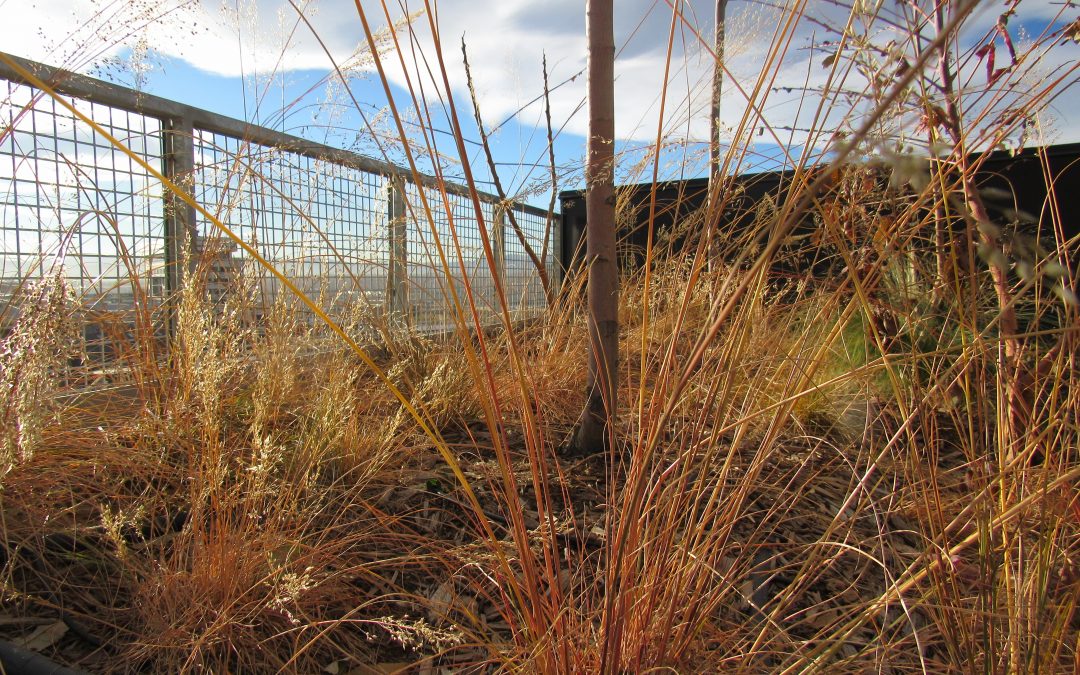When Denver voters said yes to a green roof ordinance in 2017, one requiring commercial buildings to be capped with trees, native grasses and herbs, the emphasis was on cooling the city’s atmosphere and reducing the amount of energy needed to heat and cool buildings in its rapidly growing urban core.
But water conservationists were worried the ordinance would require vast amounts of water to irrigate the new green space. That fear, however, proved to be unfounded, according to Denver Water planner Austin Krcmarik.
“We were nervous,” he says. “But after our review, we’re pretty comfortable with it. Now we see it as a benefit.”
The ordinance, formally adopted by Denver City Council Oct. 29, 2018, after it was extensively reworked, requires most new, large commercial buildings to incorporate green roofs. But the new version also allows building owners to use white membrane roofs instead when they also add offsite solar and green spaces to achieve the same climate goals. Draft rules dictating how the ordinance will be implemented were slated to be adopted in February.
With the addition of non-plant-based alternatives to the new ordinance, Denver Water estimates that water needed to implement the law each year will drop nearly in half, from 577 acre-feet to 310 acre-feet. An acre-foot equals roughly 326,000 gallons.
The idea behind green roofs is that the installed plants prevent temperature fluctuation inside the building and cool surrounding air temperatures through evapotranspiration, the process by which plants give off some of their moisture as they grow. A 2017 study by researchers at Colorado State University on a commercial green roof in Denver showed that it reduced summertime heat flux, a measure of temperature over time, by as much as 50 percent over a traditional black roof. The plantings on green roofs also make managing stormwater easier. Plants clean stormwater and slow the flow of runoff, reducing pollutants as the water migrates to the South Platte River.
Denver is currently home to roughly 50 green-topped commercial buildings, according to the city. That makes it a small player in the world of green roofs, according to Stephen Peck, executive director of the trade group Green Roofs for Healthy Cities. While that could change with the new ordinance, the law’s rewrite likely means Denver won’t claim a spot on the group’s list of cities with the most green roofs any time soon. That distinction goes to Washington, D.C., which has more than 1 million square feet of commercial office space capped with trees and grasses.
“It’s a step forward, but it’s not leading edge in terms of living building architecture,” Peck says. “Since the compromises have been made to make it easier for existing buildings to contribute to the policy goals—reducing the heat island, making green space more available—I would say it no longer falls in that category. I’m not saying they are wrong, it’s just not leading edge.”
This story originally appeared in Fresh Water News, an initiative of Water Education Colorado. Read Fresh Water News online here.


 Print
Print